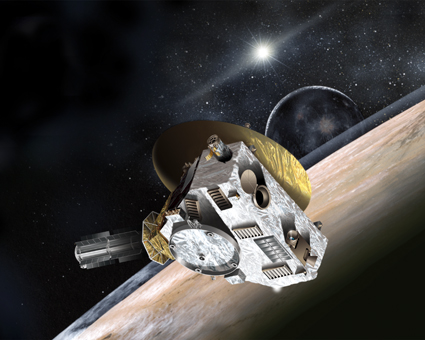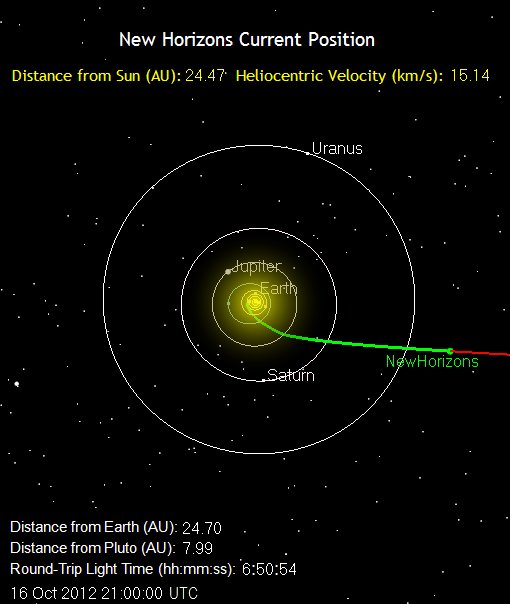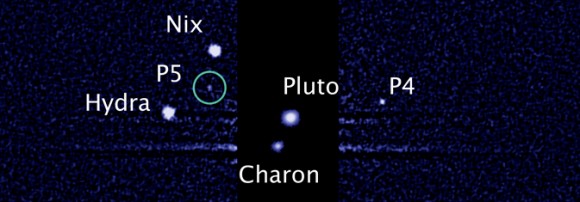Space scientists say that the five moons now known to be orbiting Pluto act as debris generators might be hazardous for the New Horizons spacecraft, which has already been traveling for seven years en route to the dwarf planet. The spacecraft, which is due to sweep past Pluto in January 2015 is moving so fast — more than 30,000 miles per hour (nearly 50,000 kilometers per hour)- that, according to these scientists:
… a collision with a single pebble, or even a millimeter-sized grain, could cripple or destroy New Horizons.

Alan Stern, principal investigator of the New Horizons mission and an associate vice president of the Space Science and Engineering Division at Southwest Research Institute in Boulder, said:
We’re worried that Pluto and its system of moons, the object of our scientific affection, may actually be a bit of a black widow.

Leslie Young of Southwest Research Institute, who is Deputy Project Scientist for the New Horizons mission, added:
We’re making plans to stay beyond her lair if we have to. From what we have determined, we can still accomplish our main objectives if we have to fly a ‘bail-out trajectory’ to a safer distance from Pluto. Although we’d prefer to go closer, going farther from Pluto is certainly preferable to running through a dangerous gauntlet of debris, and possibly even rings, that may orbit close to Pluto among its complex system of moons.
As New Horizons has traveled through the solar system, its science team has become increasingly aware of the possibility that dangerous debris may be orbiting in the Pluto system, putting NASA’s New Horizons spacecraft and its exploration objectives into harm’s way. For example, Pluto is now known to have five moons, instead of the three known at New Horizons’ launch in 2006. Stern said:
We’ve come to appreciate that those moons, as well as others not yet discovered, act as debris generators populating the Pluto system with shards from collisions between those moons and small Kuiper Belt objects.

Stern added:
We may not know whether to fire our engines on New Horizons and bail out to safer distances until just 10 days before reaching Pluto, so this may be a bit of a cliff-hanger. Stay tuned.
Bottom line: The science team of the New Horizons space mission, now en route to Pluto, are contemplating the possibility that there might be dangerous debris in Pluto’s vicinity, generated by collisions between the dwarf planet’s five moons and other objects in the Kuiper Belt. They are planning to send the spacecraft on an alternate route past Pluto, if needed to keep it safe, when it encounters Pluto in January 2015.












